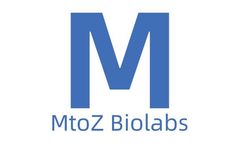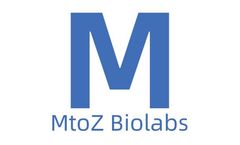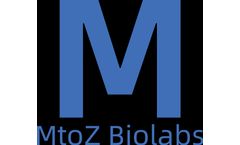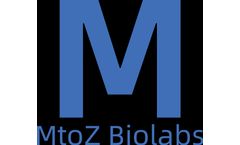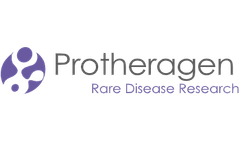Drug Platform Candidate Articles & Analysis: Older
47 articles found
Understanding the complex world of drug discovery and development necessitates familiarity with key players in cellular communication. A pivotal group in this arena is G Protein-Coupled Receptors (GPCRs). These receptors play a crucial role in transmitting signals across cell membranes, significantly influencing numerous physiological processes. Consequently, GPCRs have become a central focus in ...
Key Components of Glycan Microarrays Glycan microarrays are specialized tools that provide a platform for studying carbohydrate structures and their interactions with proteins or other biological molecules. ...
In vitro permeability assay kits play a crucial role in the field of pharmaceutical development, particularly when evaluating the absorption characteristics of drugs. These kits allow scientists and researchers to investigate how compounds permeate biological membranes, which is vital for understanding drug bioavailability. Understanding Permeability Permeability refers to the ability of a ...
Protein phosphorylation is an important post-translational modification process that involves adding a phosphate group to an amino acid residue in a protein, usually a serine, threonine, or tyrosine residue. Protein phosphorylation plays a key role in regulating various biological processes within the cell, including signal transduction, cell cycle, and metabolism. Therefore, detecting protein ...
Secretory proteins refer to those proteins that are synthesized by cells and secreted to the outside of the cell. They play an important role in many biological processes such as signal transduction, cell communication, immune response, hormone secretion, and so on. These proteins are usually synthesized in the endoplasmic reticulum (ER) of the cell and then transported out of the cell through a ...
The Latest Technological Advances in Antibody Discovery1. Single B Cell Isolation and SequencingThe isolation and sequencing of single B cells can help us gain a deeper understanding of the diversity and specificity of B cells. Through this method, we can clarify the relationship between the sequence and the cell, thus discovering antibodies with special properties. These antibodies may have high ...
Protein SequencingProtein sequencing helps to accurately analyze the amino acid sequence and three-dimensional structure of disease-related proteins, and then reveal their biological functions and interaction mechanisms, providing potential targets for new drug research.2. Peptide SequencingPeptides, as bioactive molecules, have various biological functions and are important ...
Nanobodies, also known as single-domain antibodies, have gained much attention in recent years due to their potential in various biomedical applications including drug delivery systems. Nanobodies are small antibody fragments derived from naturally occurring heavy-chain antibodies found in camelids, such as camels and llamas. They are composed of a single monomeric variable domain, making them ...
The development of new and effective drugs is a complex and multifaceted process that requires the collaboration of scientists from diverse fields, including chemistry, biology, and computational modeling. At the heart of this endeavor lies the art of drug design - the strategic and methodical approach to creating molecules that can effectively target and modulate biological pathways to treat ...
In the vast realm of drug discovery, the fusion of computational prowess and intricate molecular details has given birth to the revolutionary field of protein-small molecule docking. This innovative computational method delves deep into the complex molecular interactions between proteins and small molecules, paving the way for breakthrough advancements in therapeutic approaches and the era of ...
MtoZ Biolabs, leveraging high-precision mass spectrometry technology in conjunction with a chemical proteomics platform, provides you with high quality Collagen Analysis services and other Medical Device services. As a leading biotechnology company, MtoZ Biolabs is committed to providing comprehensive, one-stop CRO testing services to scientific research institutions and ...
Rare diseases, also known as orphan diseases, affect a small percentage of the population, making them particularly challenging to diagnose and treat. However, thanks to advancements in medical research and technology, significant progress has been made in the field of rare disease research, from developing accurate diagnostic tools to making effective small-molecule drugs. One of the biggest ...
In the vast and ever-evolving field of medicine, the discovery of new drugs has been a critical pursuit, offering hope and relief to countless individuals suffering from various ailments. The process of drug discovery is a complex and multifaceted endeavor, involving the integration of diverse scientific disciplines, including biology, chemistry, and computational science. At the heart of this ...
As professional biologists, we are enthralled by the intricate dance of life's catalysts - enzymes. These remarkable protein molecules are the unsung heroes of the biological world, orchestrating the myriad chemical reactions that sustain and power the living organisms around us. To truly understand the structural and functional intricacies of these vital biomolecules, we turn to the powerful ...
Introduction In the world of molecular interactions, understanding the forces that drive binding events is crucial for advancing scientific research and developing new therapies. One powerful technique that has revolutionized the study of molecular interactions is Microscale Thermophoresis (MST). In this blog post, we will delve into the world of microscale thermophoresis, exploring its ...
Hepatocytes are the chief functional cells of the liver, responsible for the selective uptake, metabolism and excretion of most drugs. Cells for use in plate cultures or suspension assays represent a key tool for predicting properties such as hepatotoxicity, metabolism, and potential drug-drug interactions. Since these cells mimic the properties of the liver, researchers can evaluate the ...
In recent decades, PROTACs have become an attractive technology in drug development. Candidate drugs like ARV110 and ARV-471 have entered Phase I/II clinical trials, indicating the potential of PROTACs in the treatment of cancer and other diseases. ...
With the rapid development of antibody-drug conjugate (ADC), more and more companies have entered the field of ADC research and development, and various types of ADC technologies and branches have emerged. Bispecific antibody conjugates (BsAb ADCs) are one of the emerging new technologies. The high specificity of bispecific antibodies enables more precise targeting of tumor cells. On the other ...
In the realm of modern medicine, the quest for new and effective drugs to combat various diseases is a continuous journey. Drug discovery, the process of identifying compounds that can potentially treat diseases, has seen a significant transformation in recent years, thanks to advancements in computational biology and artificial intelligence (AI). In this article, we will delve into the ...
In the dynamic realm of drug discovery, the pursuit of innovative and effective treatments for diverse diseases demands groundbreaking approaches that can expedite the drug development lifecycle. Amidst these endeavors, Computer-Aided Drug Design (CADD) has emerged as a transformative methodology, harnessing the power of computational tools and simulations to predict, understand, and optimize the ...



